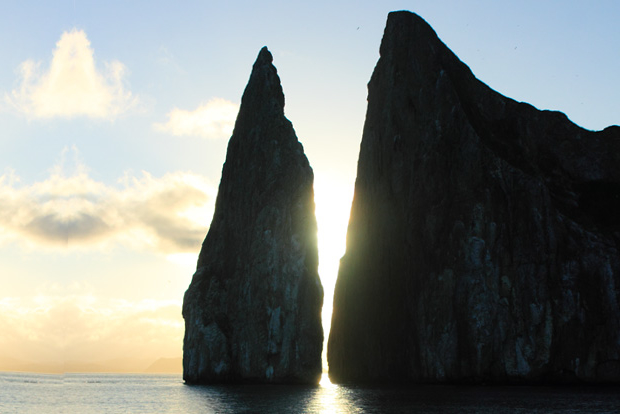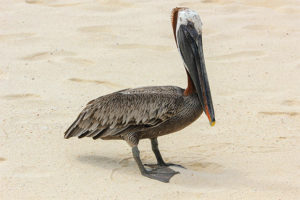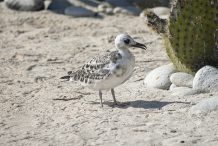Best Galapagos Family tours 2025
We are the best Galapagos Tours tour operator. Travel with galapagosinformation.com! Book today. Best Galapagos Family tours 2025.
A vacation to the Galapagos Islands may just be the excursion of a person’s lifetime. Located 1,000 km from the Ecuadorian mainland, the archipelago is made of 13 large islands, five of which are populated. Read more about the widely known Islands taking a trip here!
The Galapagos Islands certainly impact you intensely. Travel along with us and enjoy the journey of your lifetime amidst sea lions, elegant albatrosses, fiery red-colored sally light-foot crabs, and frigate birds. Allow your dream becoming reality and book with us now!
Galapagos Islands Weather Average
There are 2 seasons: December to May is hot and moist and June to December is cool and dry. Annual rain fall in the lower regions is 2-4in and the air temperature ranges somewhere between 69°-84°F/21°-29°C.
The Galapagos’s climate is influenced by marine currents. The quick climatic transformation due to El Niño can be harmful: as many as 50% of sea lions and marine iguanas can perish through this period.
The convergence of 3 main oceanic currents brings an incredible mix of marine life to Galapagos. Despite being situated in the tropics, the Galapagos micro-climate is remarkably dry. During the cold period, the Humboldt Current produces very cold water, that generates thermal inversions that prevent precipitation.
At this time, a fine mist named “garua” is created as cool, humid air just over the sea water meets a superior tier of air which is warmed by the hot sun.
‘El Niño’ is a phenomenon that takes place approximately every 5-7 years. The south trade winds slacken and cause the sea temperatures to raise substantially provoking thunder storms and precipitation.
The Galapagos is all time vacation destination, and nature-loving guests can expect to be amazed by the natural world in any month. Still, the 2 main principal “seasons,” each of which have their draws and disadvantages.
High season, when families often drive occupancy levels to the max, is considered June until early September and December until mid-January. From June through November, the Humboldt Current provides colder, nutrient-rich water and colder land temperatures. Typical peaks are typically around 80 degrees. Wind and seas are generally a bit harder. Skies tend to be overcast, but rain is unusual. The change in water quality attracts fish and sea birds, making this an amazing time to snorkel. Given the colder water temps — occasionally in the low 60s– wearing a wet suit is a smart move for snorkelers hoping to be in the water a bit longer. This is the mating season for the blue-footed boobies.

December through May, the atmosphere and water temperature ranges are usually hotter, in the high 80’s, and seas tend to be calmer. Light rain drops for a short period everyday, but the humidity is balanced with potent sunlight. Sun-lovers might be proven in February, when equatorial heating scorches the lava. Land vegetation blows up, with flowers everywhere. Numerous types of wild birds mate during this period, and sea turtle nesting can also happen.
El Nino, a weather trend, can upend weather-related forecasts, delivering a tropical feel to the atmosphere at unexpected times.
Each of the Galapagos’ official guest websites has something unique to offer, but travelers are going to be able to experience the best strikes — sea lions, marine iguanas, lava lizards, endemic birds — about the vast majority of islands. Listed below are a few of the most popular spots.
Santa Cruz includes the Galapagos’ most populous “town,” Puerto Ayora, and will be the island chain’s most important tourism hub. The island offers visitors the sole opportunity to experience the Galapagos’ inside high-lands, among a few places to see giant tortoises in their natural habitat. The Charles Darwin research laboratory, a visit to which will be contained on every cruise, is also situated here.
Champion Islet’s oceans change into a aquarium teeming with life during September and October, once the water temperatures drop. Sea plants thrive, which attracts the marine creatures, which in turn brings in the sea birds. Sea lions, especially the curious juveniles, often zip beyond and around the awkward individuals in masks and fins.
South Plaza encompasses less than one-tenth of a mile in place and is one of the Galapagos’ smallest visitor websites. Nevertheless, the tiny island, that was shaped by volcanic uplift, makes a strong impression with its color-changing ground vegetation, sea lions and colony of Galapagos land iguanas. The successful male iguanas can be seen standing guard in front of a cactus tree, waiting patiently to offer a hungry female with a piece of prickly fruit.
Rabida: makes a bold statement when you arrive during its iron-rich red shore. Just inland is a brackish lagoon where visitors often see flamingos, heads plunged underwater to scoop up crustaceans and algae using their bowl-like beaks.
Espanola is the southernmost island, home to the famous waved albatross, a child-sized bird having an eight-foot wingspan. According to the Galapagos Conservancy, every year the Whole world’s population of adult Waved Albatrosses returns to Espanola throughout the nesting season from April to December. “Spiritual expertise” is a common descriptor.
Fernandina, the Galapagos’ youngest and westernmost island is best known for its not-infrequent volcanic eruptions, the latest of which was in 2009. It is located at the locus of the “hot spot” which created, and is still creating and shaping, the Galapagos. As visitors step across lava flows and around the huge population of land iguanas, they develop a first-hand understanding of the ancestral roots of those islands.
Floreana is the place you can find the Galapagos’ famous barrel-mailbox in Post Office Bay. For centuries, those visiting the famed Ecuadorian isles relied upon the unspoken duty of fellow pirates and whalers to acquire letters to a planned destination. A mariner would render a dispatch, then select through the stack for missives he can personally send (travel program permitting). The tradition continues today; cruise passengers visiting the site can depart and take postcards from a (modern) barrel. Floreana is home to the Galapagos’ famous barrel-mailbox at Post Office Bay. For centuries, those seeing the famed Ecuadorian isles relied on the unspoken duty of pirates and whalers to Puerto Villamil and Nearby Regions – Isabela Island Cruises take in a variety of interesting points around the massive island. Puerto Villamil is a small vent in the south east of the island, and it’s home to the clear majority of the island’s inhabitants. You can take pleasure in this fishing-community vibe, sample yummy freshly caught fish, engage with the cheerful children, shop for souvenirs from the stores that are vibrant, and admire the islets that dot the shore. Stroll along the boardwalk, resulting through mangroves, and watch flamingos, gallinules, whimbrels, and more. The Tortoise Breeding Center sits at the end of the boardwalk, helping to conserve ocean tortoises. The harbor is often filled with small luxury yachts and other sailing vessels, many of which take passengers on thrilling Galapagos cruises.
Giant Tortoises
The giant tortoises of Galapagos are one of the most well-known of the unique fauna of the Islands. While giant tortoises once thrived on most of the continents of the world, the Galapagos tortoises now represent one of the remaining two types of giant tortoises in the entire world -the other group living on Aldabra Atoll in the Indian Ocean. The Galapagos Islands were named for their giant tortoises; the Spanish term galapago meant saddle, a term ancient explorers used for its tortoises on account of the shape of their shells.
The closest surviving relative of the Galapagos colossal tortoise is the little Chaco tortoise out of South America, though it’s not a direct ancestor. Scientists believe the first tortoises arrived to Galapagos two–3 million years ago by traveling 800 kilometers from the South American coast on vegetation rafts or on their own. They were massive animals before arriving in Galapagos. Colonizing the eastern-most islands of Española and San Cristobal very first, then they dispersed throughout the archipelago, finally demonstrating at least 15 individual populations on ten of the largest Galapagos Islands.
Even though there is a great amount of variation in size and form one of Galapagos tortoises, two primary morphological types exist -the domed shells (like their ancestral form) and also the saddle-backed carapace. Domed tortoises are normally considerably bigger in size and don’t have the upward thrust to the front of their carapace; they live on the larger, higher islands with humid highlands where forage is usually plentiful and readily obtainable. Saddle-backed shells evolved over the arid islands in reaction to the absence of accessible food. The front of the carapace angles upwards, allowing the tortoise to extend its head higher to reach the greater vegetation, for example cactus pads.
GALAPAGOS CRUISES 2024
NEMO 2
| DEPARTURES | ITINERARY | AVAILABLE CABINS | SPACES | |
|---|---|---|---|---|
| There aren't available dates for the selected dates |
















